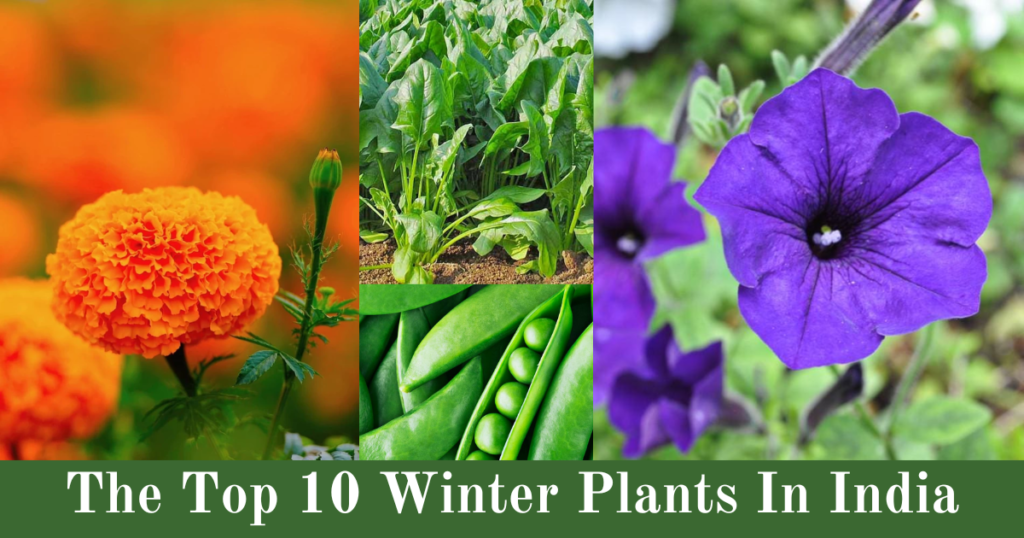In India, winter is a time of cool weather and beautiful flowers. While most plants rest, winter flowers start to bloom, filling gardens with vibrant reds, cheerful oranges, gentle purples, and pure whites. These flowers brighten up Indian gardens, making them feel lively and happy during the season.
If you’re a seasoned gardener or just starting out, winter flowers are a great choice for adding color and warmth to your garden. In this guide, we’ll explore some well-known winter flowers and provide basic information about winter plants to help you grow and take care of them easily!
5 Best Winter Flowering Plants in India
1. Marigold
Scientific Name – Tagetes
Colors of Flowers – Yellow, Orange, Golden Yellow, Red, Cream or White & Bi-Color.
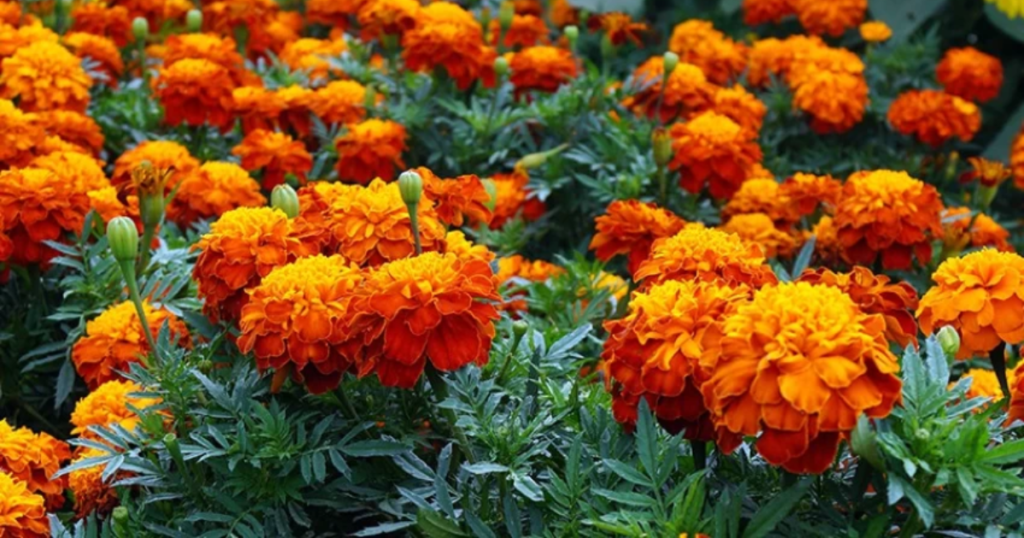
Types of Marigold –
- African Marigold
- French Marigold
- Signet Marigold
- Triploid Marigold
- Mexican Marigold
2. Dahlia
Scientific Name – Dahlia Pinnata
Colors of Flowers – Red, Pink, Yellow, Orange, White, Purple, Lavender, Biocolor & Burgundy.
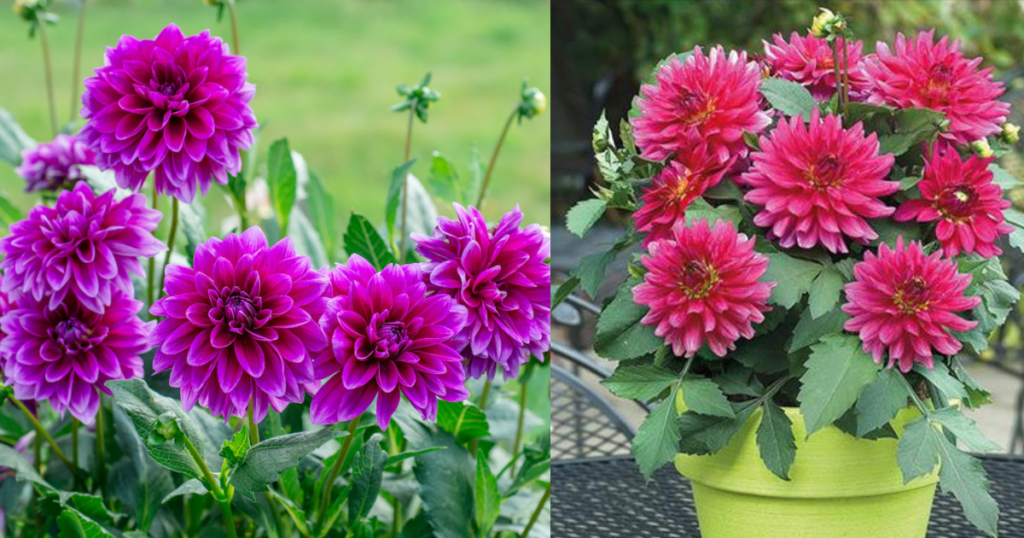
Types of Dahlia –
- Single Dahlia
- Collarette Dahlia
- Pompon Dahlia
- Ball Dahlia
- Cactus Dahlia
- Semi-Cactus Dahlia
- Decorative Dahlia
- Anemone-Flowered Dahlia
- Waterlily Dahlia
- Peony-Flowered Dahlia
- Fimbriated Dahlia
- Orchid Dahlia
3. Pansy
Scientific Name – Viola tricolor var. hortensia
Colors of Flowers – Purple, Yellow, Blue, White, Red, Orange & Multicolor Combination.
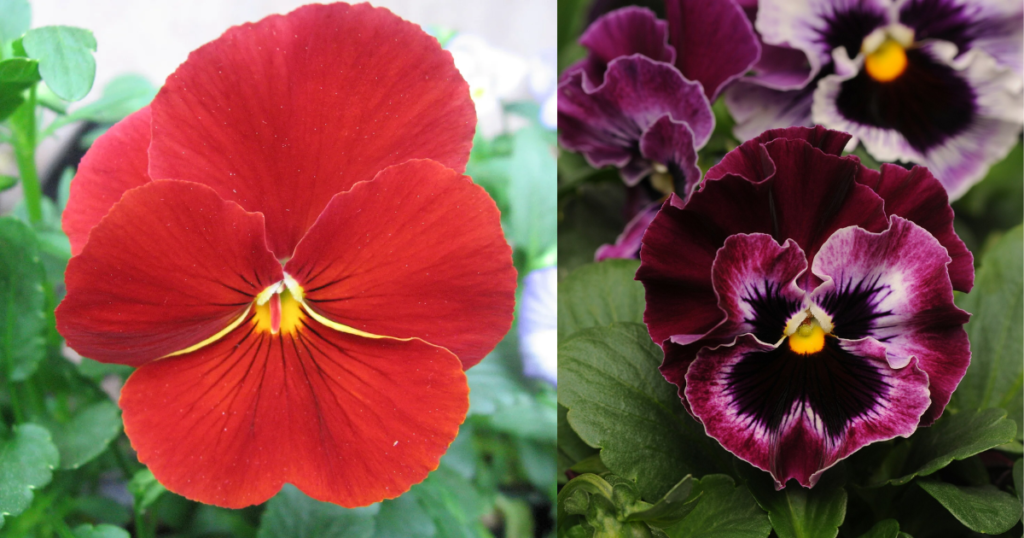
Types of Dahlia –
- Large-Flowered Pansies
- Medium-Flowered Pansies
- Small-Flowered Pansies
- Trailing Pansies
- Multicolored Pansies
- Fragrant Pansies
- Heat-Tolerant Pansies
- Winter-Flowering Pansies
4. Petunia
Scientific Name – Petunia
Colors of Flowers – White, Pink, Blue, Red, Purple, Yellow, Orange & Bi-Color.
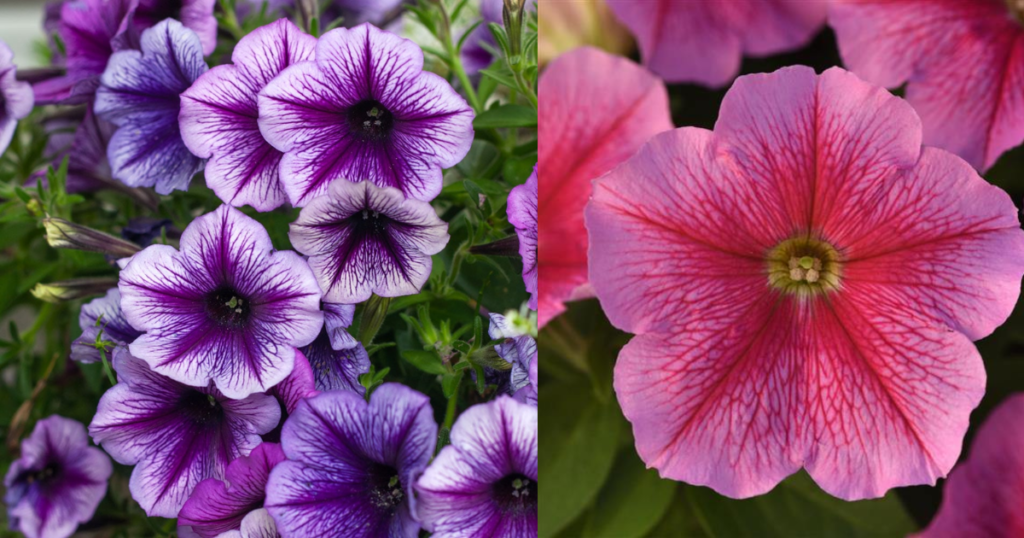
Types of Petunia –
- Grandiflora Petunia
- Multiflora Petunia
- Multiflora Petunia
- Wave Petunia
5. English marigold
Scientific Name – Calendula Officinalis
Colors of Flowers – Bright Yellow, Deep Orange, Golden Yellow & Pale Cream.
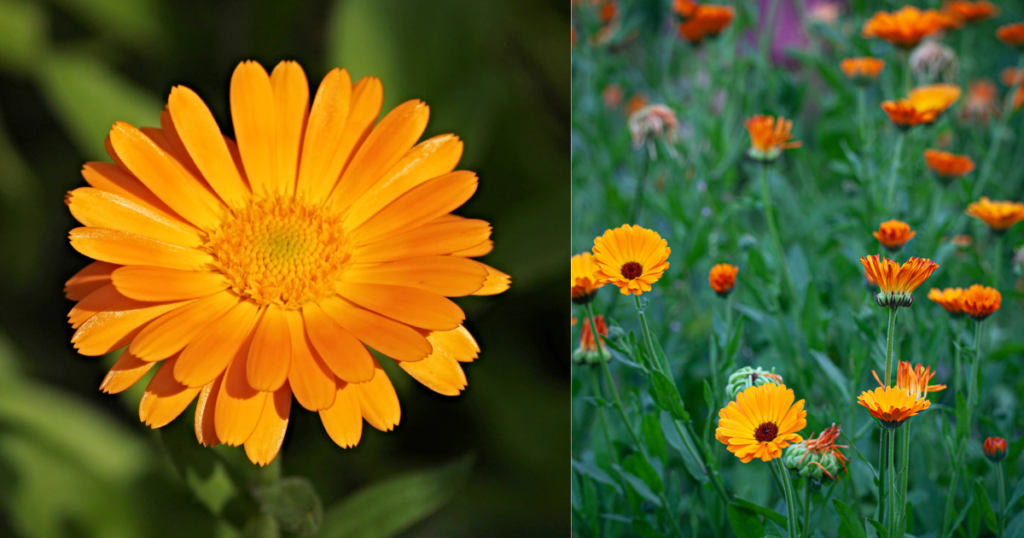
Types of Calendula –
- Calendula Officinalis
- Pacific Beauty Calendula
- Radio Calendula
- Touch of Red Calendula
- Porcupine Calendula
- Kablouna Calendula
- Green Heart Calendula
5 Best Winter Vegetables in India
1. Spinach (Palak)
Scientific Name – Spinacia oleracea

Appearance –
Spinach (Palak) is a leafy green vegetable known for its vibrant, dark green leaves that are broad, smooth, and slightly glossy. The leaves grow in a rosette pattern, and they can vary in size from small, tender ones to larger, more mature leaves. The plant typically has thick, fleshy stems that support the leaves, and the overall plant has a compact, bushy appearance. Spinach leaves are rich in texture and are often harvested when young for a milder flavor, while mature leaves have a more robust taste.
Spinach contains nutrients –
- Vitamin A: Promotes eye health and strengthens the immune system.
- Vitamin C: Enhances immunity and supports healthy skin.
- Vitamin K: Crucial for maintaining strong bones and aiding in blood clotting.
- Folate: Important for cell division and pregnancy health.
- Iron: Crucial for red blood cell production and preventing anemia.
- Calcium: Supports bone strength and muscle function.
- Magnesium: Supports muscle activity, energy generation, and nervous system health.
- Potassium: Maintains fluid balance and promotes cardiovascular health.
- Fiber: Aids digestion and promotes gut health.
- Antioxidants: Such as lutein and zeaxanthin, protect the eyes and reduce inflammation.
2. Cauliflower (Phool Gobhi)
Scientific Name – Brassica oleracea var. botrytis
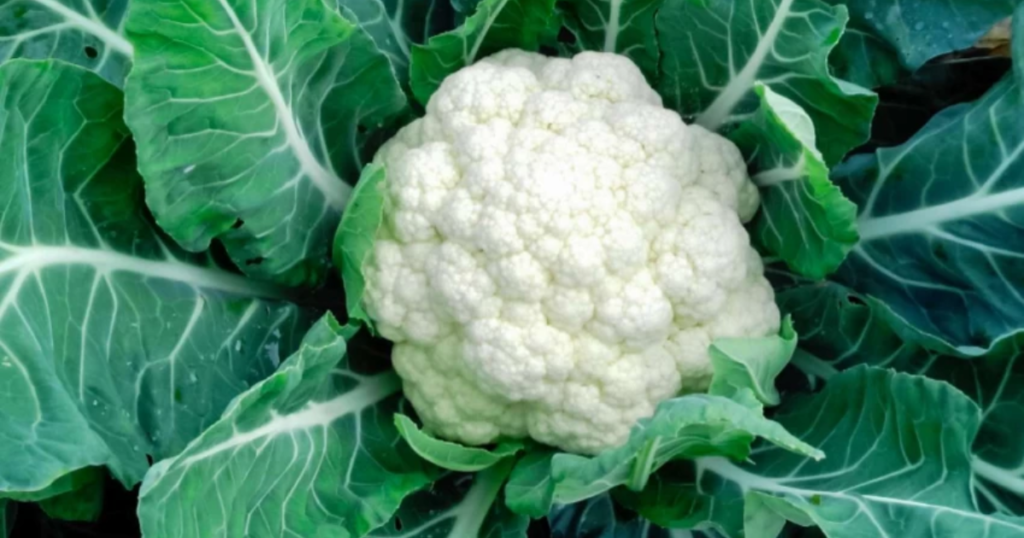
Appearance –
Cauliflower (Phool Gobhi) is a cool-season vegetable known for its compact, round head or “curd,” which is made up of tightly packed, white florets. The head is surrounded by broad, dark green leaves that protect it from sunlight, helping to maintain its creamy white color. The plant itself has a sturdy stem and can grow to about 18–24 inches tall. The cauliflower head can range in size, typically between 6 to 8 inches in diameter, and has a smooth, dense texture. While white is the most common color, there are also varieties with purple, orange, and green heads.
Cauliflower contains nutrients –
- Vitamin C: Strengthens immunity, promotes skin wellness, and aids in collagen formation.
- Vitamin K: Essential for maintaining bone strength and ensuring proper blood clotting.
- Folate: Helps in cell division and is crucial during pregnancy.
- Fiber: Aids in digestion, promotes gut health, and helps maintain healthy cholesterol levels.
- Potassium: Promotes heart health, aids muscle function, and maintains fluid balance.
- Vitamin B6: Involved in metabolism, nerve function, and red blood cell production.
- Calcium: Crucial for maintaining strong bones and proper muscle function.
- Magnesium: Aids in muscle function, boosts energy levels, and promotes nerve health.
- Antioxidants: Including sulforaphane and glucosinolates, which help reduce inflammation and protect against chronic diseases.
3. Fenugreek (Methi)
Scientific Name – Trigonella foenum-graecum
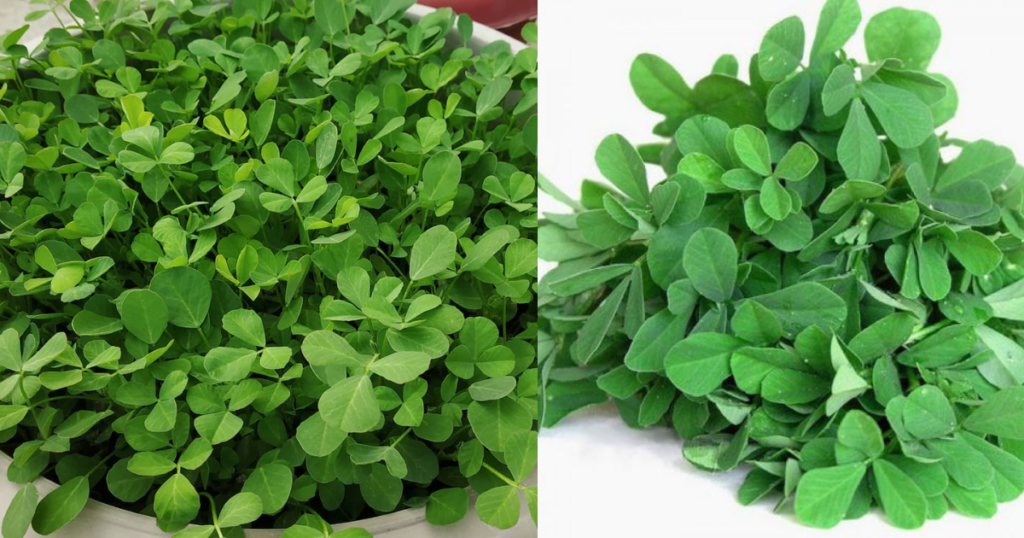
Appearance –
Methi, also called fenugreek (Trigonella foenum-graecum), is a small herb that can grow about 2 feet tall. It has a thin, upright stem and green leaves that are made up of three small oval leaflets, which look a bit like clover. The plant produces tiny flowers that are pale yellow or white and bloom near the leaves, and these flowers turn into long pods filled with golden-yellow seeds. The fresh leaves are soft and have a slightly bitter smell, while the dried leaves, known as kasuri methi, have a stronger, earthy scent. Methi is popular for cooking, has many health benefits, and grows well in light, well-drained soil.
Methi contains nutrients –
- Vitamin C: Strengthens the immune system, supports skin health, and functions as an antioxidant.
- Vitamin K: Essential for blood clotting and maintaining bone health.
- Folic Acid: Supports cell growth, especially during pregnancy.
- Thiamine and Riboflavin: Help in energy production and maintaining a healthy nervous system.
- Iron: Aids in preventing anemia by promoting the production of red blood cells.
- Calcium: Promotes strong bones and teeth while aiding in muscle and nerve function.
- Magnesium: Helps maintain muscle function, balance blood sugar, and support heart health.
- Phosphorus: Collaborates with calcium to strengthen bones and teeth.
- Potassium: Maintains fluid balance, supports heart health, and controls blood pressure.
- Zinc: Boosts immunity, aids in wound healing, and supports growth and development.
- Protein: Important for muscle repair, growth, and overall body function.
- Dietary Fiber: Improves digestion, regulates blood sugar levels, and helps manage cholesterol.
- Saponins, Flavonoids, and Alkaloids: Protect cells from oxidative stress, reduce inflammation, and may help in preventing chronic diseases like heart disease and diabetes.
- Bioactive Compounds: Improve metabolism, support digestion, and promote overall well-being.
4. Peas (Matar)
Scientific Name – Pisum sativum
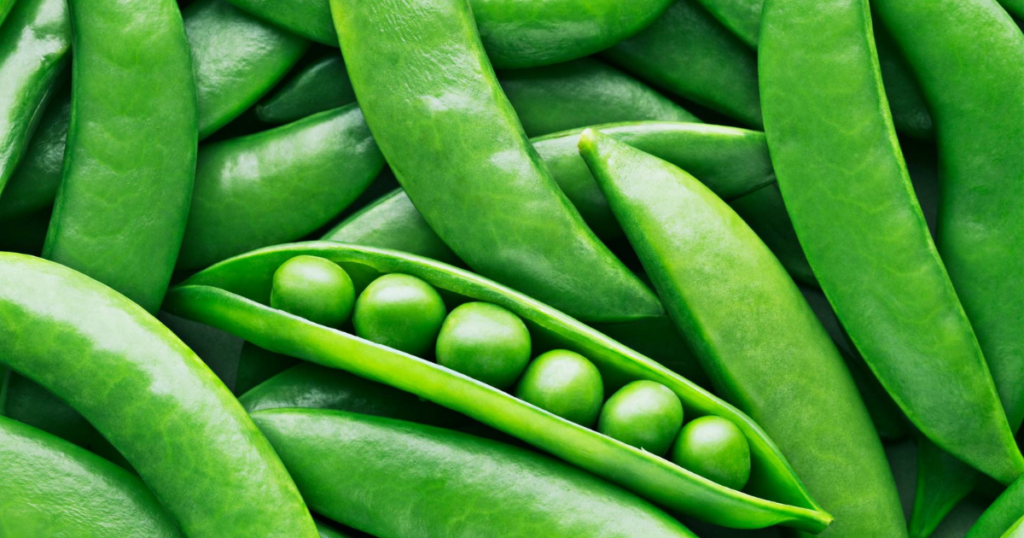
Appearance –
Peas, known scientifically as Pisum sativum, are tiny, round seeds that grow in long, green pods on a climbing plant. This plant has thin stems with little tendrils that help it climb and stay upright. Its leaves are made up of smaller oval-shaped leaflets, and it produces small flowers that can be white or light purple. The pods are usually bright green, smooth, and a bit curved, holding several peas lined up inside. When fresh, the seeds are round, green, and taste sweet and starchy. Overall, peas look vibrant and healthy, making them a colorful and nutritious vegetable for winter.
Matar contains nutrients –
- Vitamin C: Enhances immune function and serves as an antioxidant.
- Vitamin A: Promotes eye health and enhances skin condition.
- Vitamin K: Supports blood clotting and contributes to bone health.
- B-complex Vitamins: Enhance energy production and support the nervous system.
- Iron: Helps prevent anemia by promoting the production of red blood cells.
- Calcium: Strengthens bones and teeth.
- Magnesium: Regulates muscle and nerve functions.
- Potassium: Maintains fluid balance and controls blood pressure.
- Zinc: Supports immunity and aids in cell repair.
- Protein: Builds and repairs body tissues.
- Dietary Fiber: Improves digestion and helps maintain healthy cholesterol levels.
- Carbohydrates: Provide energy for the body.
- Plant-Based Phytonutrients: Support overall health and may reduce the risk of chronic diseases.
5. Radish (Mooli)
Scientific Name – Raphanus sativus
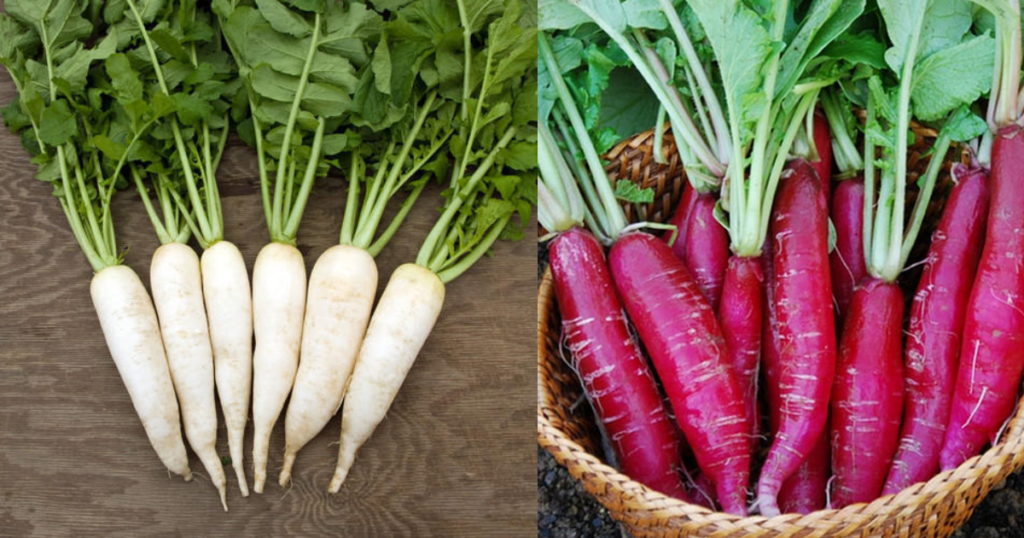
Appearance –
Radish (Raphanus sativus) is a crunchy root vegetable known for its unique, mildly spicy taste. It can be shaped like a cylinder or a ball, depending on the type, and has smooth, thin skin that can be white, pink, red, or even purple. The part we eat grows underground, while the green leaves that sprout above are also good for you. Radishes are usually small to medium-sized and have a firm, white inside. People often add them to salads, pickles, and many Indian recipes.
Radish contains nutrients –
- Vitamin C: Boosts immunity, promotes healthy skin, and protects cells from oxidative damage.
- Vitamin B6: Supports brain development and helps regulate mood.
- Potassium: Assists in managing blood pressure and promotes cardiovascular health.
- Calcium: Boosts bone and dental health while supporting muscle function.
- Magnesium: Aids in muscle and nerve function while helping to sustain energy levels.
- Water Content: High water content helps keep the body hydrated and supports kidney function.
Conclusion
Winter in India is a great time to appreciate the colorful flowers and delicious seasonal vegetables. The bright petals of petunias and marigolds, along with the nutritious spinach and carrots, make winter gardens both beautiful and useful. By adding these plants to your garden, you can make your home look nicer and enjoy fresh, healthy food. Whether you love gardening or just want to eat better, these top 10 winter plants can turn your space into a lively and fruitful area. Begin planning your winter garden now and enjoy the fun of growing seasonal plants!

